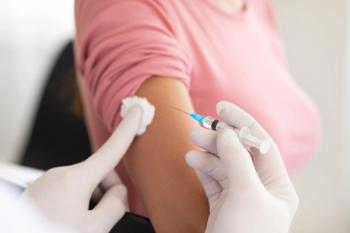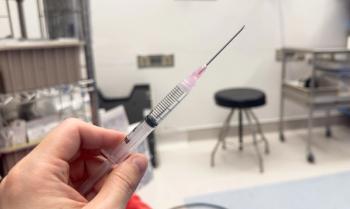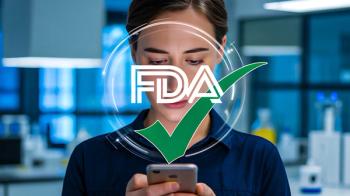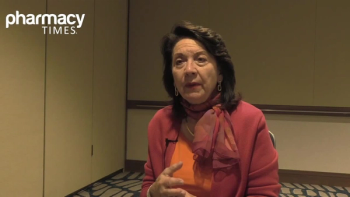
- October 2021 Immunization Guide for Pharmacists
Using mRNA to Create the Elusive HIV Vaccine
The success of the COVID-19 messenger RNA (mRNA) vaccines from Pfizer/BioNTech and Moderna has given many HIV advocates hope that a preventive mRNA vaccine is on the horizon.
AIDS was first described in June 1981 when a report published in the CDC’s Morbidity and Mortality Weekly Report (MMWR) documented 5 previously healthy individuals with pneumocystis pneumonia, a disease known to mostly affect severely immunocompromised people.1 In 1983, the virus that causes AIDS was identified; it was later named human immunodeficiency virus (HIV).1,2
The medical community has now strived to eradicate HIV for almost 40 years. During that time, those who work closely with HIV have determined that developing and introducing vaccines is the only way to end the AIDS epidemic.3 However, at this moment, the FDA has not approved any prophylactic or therapeutic HIV vaccines, as candidate vaccines have failed or shown limited and questionable efficacy.3-5
Despite this difficulty, promising new vaccines are being studied. The success of the COVID-19 messenger RNA (mRNA) vaccines from Pfizer/BioNTech and Moderna has given many HIV advocates hope that a preventive mRNA vaccine is on the horizon. Adding to this excitement is a phase 1 clinical trial (NCT05001373) that began in September 2021 studying a sequence of mRNA vaccines that may prevent HIV.6
This article discusses NCT05001373 and places the trial in the context of research that paved the way for it, institutions supporting the trial, and other HIV research and vaccines in development.
NCT05001373: ASSESSING AN mRNA HIV VACCINE SEQUENCE
The mRNA vaccine trial (NCT05001373) investigates the hypothesis that vaccination by a germline-targeting prime and then by directional boost immunogens can both provoke B-cell specific class response and steer early maturation toward broadly neutralizing antibody (bnAb) growth through an mRNA platform.6
This randomized, first-in-human, open label study examines HIV-1 uninfected adults in good general health. Adults 18 to 50 years of age who apply for the trial and meet all inclusion and no exclusion criteria will be enrolled and randomized. Then, depending upon their assigned group, trial participants will receive either or both of the experimental mRNA vaccines (mRNA- 1644 [eOD-GT8 60mer mRNA], mRNA- 1644v2-Core [Core-g28v2 60mer mRNA]) via intramuscular injection. Safety and tolerability, the primary outcome measure, will be assessed by the proportion of participants with mild, moderate, or severe adverse effects at different times throughout the study. Investigators will also study immunogenicity, the secondary outcome measure, by means of presence and magnitude of relevant immune biomarkers at 10 months.6
Investigators estimate an enrollment of 56 participants and study completion by May 1, 2023.6
RESEARCH BEHIND THE TRIAL: BNABS AND NCT03547245
The bnAbs of interest in NCT05001373 may be the key to protecting uninfected people from HIV. Whereas other prophylactic vaccines contain a series of the same antigen to induce an immune response, the phase 1 trial tests whether a sequence of immunogens may guide the immune system’s antibody response as it develops naive B cells into mature bnAbs. Mature bnAbs can be traced back to a germline-targeting antigen; vaccine sequencing might then begin with germline targeting and shepherd antibody response to produce mature HIV-fighting cells.3
NCT05001373, which is a collaboration principally between International AIDS Vaccine Initiative (IAVI) and ModernaTx, Inc, builds upon the success of NCT03547245, the results of which IAVI and Scripps Research announced in February 2021. The trial demonstrated that the eOD-GT8 60mer vaccine could, indeed, stimulate germline B cells, a first step in bnAb production.6-9
FUTURE DIRECTIONS: OTHER HIV RESEARCH AND VACCINES IN DEVELOPMENT
The vaccine sequence that investigators are studying in NCT05001373 may become a tool to ending the AIDS epidemic. However, researchers are investigating other exciting anti-HIV strategies and vaccines, too.
One such strategy is described by Williams et al in a study published in Cell in May 2021. The study investigators examined how glycan-reactive B cells in rhesus macaques and humans evolved in the presence of HIV-1 envelope (Env). They discovered and described what they call Fab-dimerized glycan-reactive (FDG) antibodies, which bind to HIV-1 Env glycans. FDG antibodies neutralize HIV-1 and offer hope that another prophylactic vaccine for humans might be developed.10
Therapeutic HIV vaccines also show promise. A prophylactic HIV vaccine would prepare the immune system to recognize and effectively fight HIV in uninfected patients.4 By contrast, therapeutic HIV vaccines are designed to improve the immune response in a person who is already infected. Theoretically, this could slow progression from HIV to AIDS and keep a patient’s viral load at undetectable levels without antiretroviral therapy (ART).5 Research has shown that patients with an undetectable viral load are unable to transmit the virus to others through sexual transmission, a concept known as “U = U” for “Undetectable = Untransmittable.”11
Institutions like IAVI and the HIV Vaccine Trials Network (HVTN), headquartered at the Fred Hutchinson Cancer Research Center, are at the forefront of HIV vaccine development.6 A global, publicly funded, multidisciplinary collaborative that facilitates HIV vaccine development, HVTN has conducted over 50 HIV-vaccine-related clinical trials over the past decade.12 The Table lists the 8 HIV-vaccine-related studies that are part of the HVTN, currently recruiting, and available on ClinicalTrials.gov.13-21
NCT05001373 represents an important step toward having a widely available HIV preventive vaccine available to the general public. Public health and HIV advocates are patiently awaiting the results of this and other groundbreaking trials with the hopes that ending the HIV epidemic is right around the corner.
Christina M. Madison, PharmD, FCCP, AAHIVP, is the founder and CEO of The Public Health Pharmacist, PLLC, in Las Vegas, Nevada.
REFERENCES
- Curran, JW. Editorial note -- 1996. Reproduced in Pneumocystis pneumonia -- Los Angeles. MMWR Morb Mortal Wkly Rep. 1999;48(LMRK):77-81. CDC. June 5, 1981. Accessed September 10, 2021. https://www.cdc.gov/mmwr/preview/mmwrhtml/lmrk077.htm
- Barré-Sinoussi F, Chermann JC, Rey F, et al. Isolation of a T-lymphotropic retrovirus from a patient at risk for acquired immune deficiency syndrome (AIDS). Science. 1983;220(4599):868-871. doi:10.1126/science.6189183
- Burton DR. Advancing an HIV vaccine; advancing vaccinology. Nat Rev Immunol. 2019;19(2):77-78. doi:10.1038/s41577-018-0103-6
- What is a preventive HIV vaccine? NIH Office of AIDS Research. Accessed September 9, 2021. https://hivinfo.nih.gov/understanding-hiv/fact-sheets/what-preventive-hiv-vaccine
- What is a therapeutic HIV Vaccine? NIH Office of AIDS Research. Accessed September 9, 2021. https://hivinfo.nih.gov/understanding-hiv/fact-sheets/what-therapeutic-hiv-vaccine
- A phase 1 study to evaluate the safety and immunogenicity of eOD-GT8 60mer mRNA vaccine (mRNA-1644) and Core-g28v2 60mer mRNA vaccine (mRNA-1644v2-Core). ClinicalTrials.gov. Updated August 19, 2021. Accessed September 9, 2021. https://clinicaltrials.gov/ct2/show/NCT05001373
- First-in-human clinical trial confirms novel HIV vaccine approach developed by IAVI and Scripps Research. News release. International AIDS Vaccine Initiative. February 3, 2021. Accessed September 16, 2021. https://www.iavi.org/news-resources/ press-releases/2021/first-in-human-clinical-trial-confirms-novel-hiv-vaccine-approach-developed-by-iavi-and-scripps-research
- Moderna provides business update and announces three new development programs in infectious disease vaccines. News release. ModernaTx. January 11, 2021. Accessed September 16, 2021. https://investors.modernatx.com/news-releases/news-release-details/moderna-provides-business-update-and-announces-three-new
- A phase 1 study to evaluate the safety and immunogenicity of eOD-GT8 60mer mRNA vaccine, Adjuvanted. ClinicalTrials.gov. Updated February 5, 2020. Accessed September 16, 2021. https://clinicaltrials.gov/ct2/show/NCT03547245
- Williams WB, Meyerhoff RR, Edwards RJ, et al. Fab-dimerized glycan-reactive antibodies are a structural category of natural antibodies. Cell. 2021;184(11):2955-2972.e25. doi:10.1016/j.cell.2021.04.042
- HIV undetectable=untransmittable (u=u), or treatment as prevention. National Institute of Allergy and Infectious Diseases. Reviewed May 21, 2019. Accessed September 17, 2021. https:// www.niaid.nih.gov/diseases-conditions/treatment-prevention
- About. HIV Vaccine Trials Network. Accessed September 17, 2021. https://www.hvtn.org/en/about.html
- HVTN | Recruiting studies | HIV. ClinicalTrials.gov. Accessed September 9, 2021. https://clinicaltrials.gov/ct2/results?term=HVTN&cond=HIV&Search=Apply&recrs=a&age_v=&gndr=&type=&rslt=
- HVTN | Recruiting studies | HIV. ClinicalTrials.gov. Accessed September 9, 2021. https://clinicaltrials.gov/ct2/results?term=HVTN&cond=HIV&Search=Apply&recrs=a&age_v=&gndr=&type=&rslt=
- Analytical treatment interruption (ATI) to assess the immune system’s ability to control HIV in participants who became HIV-infected during the HVTN 704/HPTN 085 AMP study. ClinicalTrials.gov. Updated September 14, 2021. Accessed September 17, 2021. https://clinicaltrials.gov/ct2/show/NCT04801758?term=HVTN&recrs=a&cond=HIV&draw=2&rank=1
- Analytical treatment interruption (ATI) to assess the immune system’s ability to control HIV in participants who became HIV-infected during the HVTN 703/HPTN 081 AMP study. ClinicalTrials.gov. Updated September 5, 2021. Accessed September 17, 2021. https://clinicaltrials.gov/ct2/show/NCT04860323
- Evaluating safety and immune response to the HIV-1 CH505 transmitted/founder gp120 adjuvanted with GLA-SE in Healthy, HIV-exposed uninfected infants (HVTN 135). ClinicalTrials. gov. Updated December 31, 2020. Accessed September 17, 2021. https://clinicaltrials.gov/ct2/show/NCT04607408
- Evaluating the safety and immunogenicity of stabilized CH505 TF chTrimer in healthy, HIV-uninfected adult participants. ClinicalTrials.gov. Updated June 7, 2021. Accessed September 17, 2021. https://clinicaltrials.gov/ct2/show/NCT04915768
- Evaluating the safety and immunogenicity of HIV-1 BG505 SOSIP.664 gp140 with TLR agonist and/or alum adjuvants in healthy, HIV-uninfected adults. ClinicalTrials.gov. Updated September 2, 2021. Accessed September 17, 2021. https://clinicaltrials.gov/ct2/show/NCT04177355
- Evaluating the safety and immunogenicity of EnvSeq-1 and CH505 M5 gp120 Envs adjuvanted with GLA-SE in healthy, HIV-uninfected adults. ClinicalTrials.gov. Updated May 18, 2021. Accessed September 17, 2021. https://clinicaltrials.gov/ct2/show/ NCT03220724
- Evaluating the safety, tolerability, pharmacokinetics, and antiviral activity of the monoclonal antibody PGT121.414.LS administered alone and in combination with VRC07-523LS via intravenous or subcutaneous infusions in healthy, HIV-uninfected adult participants. ClinicalTrials.gov Updated August 4, 2021. Accessed September 17, 2021. https://clinicaltrials.gov/ct2/ show/NCT04212091
- A study of heterologous vaccine regimen of adenovirus serotype 26 Mosaic4 human immunodeficiency virus(ad26.Mos4.Hiv), adjuvanted Clade c gp140 and Mosaic gp140 to prevent HIV-1 infection among cis-gender men and transgender individuals who have sex with cis-gender men and/or transgender individuals (MOSAICO). ClinicalTrials.gov. Updated September 1, 2021. Accessed September 17, 2021. https://clinicaltrials.gov/ct2/show/ NCT03964415
Articles in this issue
about 4 years ago
Addressing Vaccine Hesitancy Among Health Care Workersabout 4 years ago
COVID-19 Vaccines: FDA Approved, EUA, and in the Pipelineabout 4 years ago
New Vaccines for 2021 and the Vaccine Development PipelineNewsletter
Stay informed on drug updates, treatment guidelines, and pharmacy practice trends—subscribe to Pharmacy Times for weekly clinical insights.


















































































































































































































